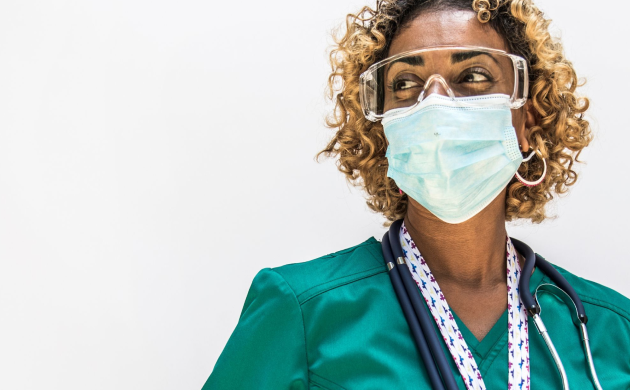
Why is RSV on the rise? What parents should know
RSV, a common respiratory illness that is the leading cause of hospitalization among infants, has been on the rise in the U.S. for several months now. You may have seen reports in the news that the surge in cases is putting a strain on the health care system and some hospitals are beginning to have fewer pediatric beds available.
The virus started earlier, and there have been more cases, than in previous years, explains Gary Kohn, MD, a pediatric pulmonologist at Summit Health. “We have been seeing an increase in respiratory viral infections like RSV in children since April. This increase is concerning because we usually see a decrease in infections during the spring and summer seasons,” he adds.
Before the pandemic nearly all children were infected with RSV by their second birthday. For many, it’s a simple cold that comes and goes. But some kids are more susceptible to severe disease than others. If your child has symptoms of RSV or any other viral illness — and you want them to be seen by a physician — walk into your local CityMD for a convenient and timely evaluation.
Here is what every parent should know about the virus.
What is RSV?
RSV, which stands for respiratory syncytial virus, generally causes cold-like symptoms, including nasal congestion or drainage and a wet cough. Most adults and older children who contract RSV have mild cases. They generally do not need any medical care and will feel better in about a week.
But young children, especially those under the age of two, and individuals with weakened immune systems are more likely to experience severe infection. The virus can affect the lungs causing inflammation or infection to develop in the airways. When this happens, young children may start to have difficulty breathing also known as respiratory distress.
“Since young children have smaller airways, mucus and debris are more likely to develop and obstruct the normal flow of air,” explains Dr. Kohn. “This can make it harder to breathe and lead to symptoms like coughing and wheezing.”
RSV spreads easily through contaminated surfaces and respiratory droplets when someone sneezes or coughs. Dr. Kohn says it is important to keep sick children home from daycare or school to avoid spreading the virus.
Why is RSV on the rise?
Virus strains change over time, explains Dr. Kohn. In addition to RSV, pediatricians across the country are seeing an increase in many upper respiratory infections, including rhino-enterovirus (REV) and influenza A, a common strain of the flu.
In the past, most children were infected with RSV by the time they turned two years old. However, the pandemic may have delayed this typical window of exposure.
“This makes us wonder if there has been a change in children’s immunity to these viruses,” says Dr. Kohn. “There is speculation that the pandemic and social distancing practices that were put in place to limit the spread of COVID-19 may have affected or delayed their ability to fight off these viruses.”
Symptoms of RSV
During the first few days of infection, both children and adults with RSV typically have signs of an upper respiratory infection. Symptoms include:
- Nasal congestion and drainage
- Wet cough
- Fever
“You can help small children by clearing secretions from the nose with saline irrigation at home as often as needed,” advises Dr. Kohn. “Secretions can cause nasal obstruction and are a major cause of respiratory distress in infants.”
The symptoms of RSV may get worse in children around days three to five. This is when signs of breathing or respiratory distress are most likely to begin. If you notice your infant or toddler experiences any of the following symptoms, seek medical care at your neighborhood CityMD urgent care or hospital right away:
- Rapid breathing
- Nasal flaring
- Grunting
- Excessive coughing
- Pulling of the rib and neck muscles when they exhale
- Belly breathing
- Fatigue
- Loss of appetite
Most cases of RSV last for about 10 days. You may have a lingering dry cough for several weeks.
How RSV is diagnosed
Respiratory infections, including RSV, REV, and the seasonal flu, are diagnosed using a nasal swab.
Testing is not always necessary, especially if you have mild cold symptoms and are not experiencing any breathing distress. Dr. Kohn recommends the following self-care tips:
- Take non-aspirin pain relievers as needed to control fever or pain
- Drink plenty of fluids
- Rest at home
- Stay away from others to avoid spreading the virus
Treatment for RSV
There is no specific medicine to treat RSV. Antibiotics will not help treat the virus. RSV infection will not respond to asthma medications like inhaled or systemic steroids.
Nearly 2 to 3% of infants are hospitalized for RSV. Premature infants, born before 30 weeks, are three times more likely to be admitted to the hospital than babies who were full-term.
“If your child is admitted to the hospital, there is excellent technology and supportive care available. Infants may need IV fluids or oxygen,” explains Dr. Kohn. “Most children have a full recovery within a few weeks.”
How to reduce your child’s risk
There is an increase in local cases of RSV in the tri-state area. To help reduce the risk of respiratory infections, Dr. Kohn advises you and your child:
- Practice good hand hygiene
- Minimize exposure to other children who are sick whenever possible
- Have a yearly flu vaccination
If your child is having difficulty breathing, do not delay medical attention. Contact your pediatrician for an emergency appointment or visit your local CityMD urgent care.

We’re ready to care for you.
Visit any CityMD urgent care location in your community today for an evaluation with one of our expert providers.